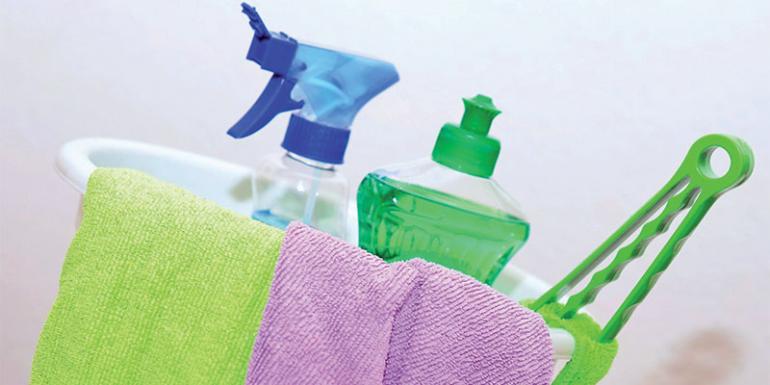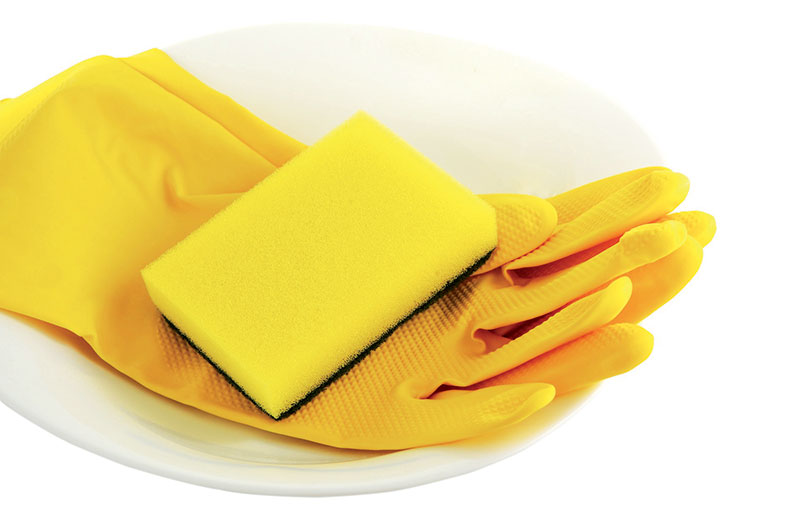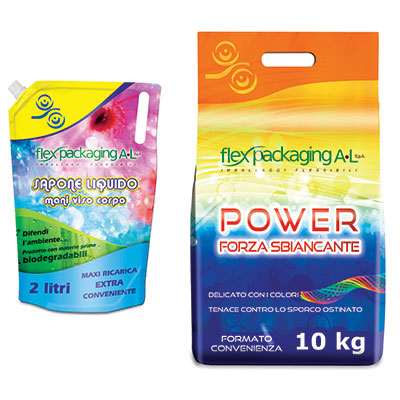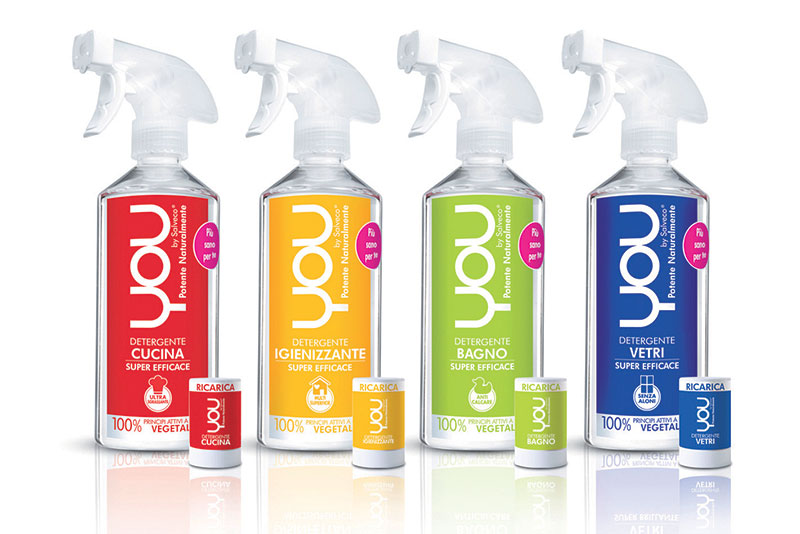Domestic detergency: products and packaging (at the time of Covid-19)

Having filed away a good 2019, the global health emergency has disrupted the performance and forecasts for 2020 of the detergent sector, assigning it a crucial role.
Barbara Iascone
Istituto Italiano Imballaggio
Based on the classification of Assocasa (an association belonging to Federchimica), the products for cleaning, maintenance and hygiene of domestic environments are divided into: detergents, laundry soaps, washing aids, disinfectants and environmental disinfectants, waxes, car care products, environmental deodorants and products for cleaning and maintenance in general.
The latest annual report available on the sector’s trends shows, in 2019, a growth in turnover of + 0.9% compared to the previous year. Analysing in detail the individual items, it emerges that detergent products are the most representative segment, registering an overall +1%, despite the slight decrease in dishwasher detergents, somewhat mitigated by the growth of gel products (+11%).
The fraction of liquid caps was also highly appreciated (+30%) and excellent the performance of laundry detergents (+2.8%); washing aids (+1.4%) and disinfectants and disinfectants are also growing.
| 2018 | 2019 | var 19/18 | |
|---|---|---|---|
| Production | 2,149,401 | 2,179,492 | 1.4% |
| Imports | 629,695 | 648,725 | 3.0% |
| Exports | 1,289,192 | 1,471,618 | 14.2% |
| Consumption | 1,489,904 | 1,356,599 | -8.9% |
Source: Istat
From a quantitative point of view, Istat notes that in 2019 global production grew by 1.4%, reaching around 2,180 million tons.
Foreign trade, again according to Istat findings, ended the year with a +3% for imports and a +14% for exports.
The apparent consumption, at national level, was around 1,350 million tons, a downward trend compared to 2018 (-8.9%) due to the fact that a large part of the production was absorbed by exports.
| 2019 | 2020 Hypothesis | |
|---|---|---|
| Metal spraycan | 1.5% | 1.2% |
| Plastic wraps | 1.0 | 0.6% |
| Cardboard boxes | 4.0% | 4.0% |
| Plastic flacons | 66.5% | 67.5% |
| Polylaminate converter flexibles | 24.0% | 24.5% |
| Flexible plastic tubes | 1.0% | 0.6% |
| Briks | 0.3% | 0.2% |
| Vending machines | 0.2% | 0.1% |
| Biodegradable refill packs | 1.5% | 1.3% |
| Total | 100.0% | 100.0% |
Source: Banca Dati Istituto Italiano Imballaggio/III databank
Distribution channels and marketing strategies
As can be seen from the above data on the sector, the trends relating to production quantities appear to be decidedly better than those relating to the value in euros. This gap is determined by the affirmation of marketing and distribution practices, now widespread: special offers in points of sale, 3x2, or packages capable of providing a greater number of washes with the same quantity of product, etc ...
The detergent industry, moreover, is making considerable efforts to respond to the needs of families and, at the same time, to offer innovative and high-performance products. The growing attention of consumers, on the one hand, to savings, on the other hand, increasingly, to environmental sustainability also influences the choices of formulation and packaging.
As regards the evolution of distribution channels, Drug Specialists continue to grow, +6.4%, which are the second largest sales channel after supermarkets.
Online commerce is advancing at a fast pace also in Italy, and for the most varied reasons: from the convenience of home delivery, to the possibility of accessing special offers, much used for “stock-purchases” (by buying a large number of large-format packages, conveniently delivered to the home).

Packaging of cleaning products: types
The choice of packaging material turns out to be largely functional to the chemical-physical characteristics of the product to be packaged, but it also depends on communication and marketing needs, so packaging is an essential element in differentiating and enhancing the brand and any innovations proposals.
If we consider primary, secondary, transport and accessories packaging in their entirety, in 2019 the domestic domestic detergent “absorbed” 216,000 tons (of which over 83,000 tons refer to plastic).
In relation to value, plastic packaging represents 89.6% of the total, 7.3% refers to paper packaging, while the remaining 3.1% refers to metal packaging.
The primacy of plastic. In the detergency sector, therefore, plastic packaging, whether rigid or flexible, continues to dominate: the only changes in registered market shares continue to be those between the different types of plastic. The data for 2018 also shows this: globally, the tons of plastic used for the packaging of household cleaning products totaled 17.70 million (of which approximately 80,300 in Italy).
Analyzing the numbers of the Italian Packaging Institute Database relating to the mix of the different types of primary packaging of household cleaning products, plastic and bio-plastic packaging, both rigid and flexible, stood at 91.5%: an unquestionable record, constant for some years now, which also shows the increase in packaging in biodegradable or post-recycling polymer.
| Plastic | 89.6% |
| Paper | 7.3% |
| Metals | 3.1% |
| Total | 100.0% |
These are the percentage shares to be attributed to the various types of packaging:
- 66.5% for rigid plastic bottles, with a constant share for many years now, with deviations only in favor of recycled plastics compared to virgin ones;
- containers made of coupled flexible converter material, increasing year after year, in 2019 reached 24% of the total;
- constantly growing (1.5% of the total in 2019) refills made of biodegradable plastic material, designed for concentrated products (these, poured into the bottle and mixed with hot water, dissolve releasing what is necessary to reconstitute the original product);
- wraps for soap pieces (1%);
- tubes (1%).
The other materials. The remaining 6% of the primary packaging in the sector is made up of:
- cardboard boxes, mainly used for powder products and dishwasher tabs, which remain constant at 4%;
- metal spray cans (those in steel now represent almost all of them, to the detriment of those in aluminum) which stand at 1.5%;
- rigid coupled containers with a prevalence of paper of 0.3%, down on 2018;
- automatic distributors of bulk products (0.2%), a phenomenon that has not taken root in Italy as in other countries and has gradually decreased over the years;
- in the face of the growth of online sales channels for cleaning products, transport packaging (corrugated cardboard boxes, shrink film and pallets) isconstantly increasing.


The first months of 2020 and forecasts for the current year
The forecasts for 2020 must necessarily take into account the lockdown period due to the pandemic, which will have a decisive impact on this year’s trend.
As with other consumer goods sectors, the household cleaning and home care market has also undergone major shocks in the quarantine months: in fact, all detergent products, and in particular the disinfectant department, recorded growth rates of around 30%.
Based on the first elaborations referring to 2020, a growth trend of about 2% is expected for the sector, which will mainly involve products packaged in plastic bottles (detergents, disinfectants, sanitizing products, etc.); such an increase should therefore lead to a +2-2.5% increase in demand.
Considering the total of primary packaging used for the sector, the share of plastic bottles could rise to 67.5%, but growth is also assumed for flexible converter packaging, which could reach 24.5%. Increments, these, which will erode the share of other types of packaging.





















